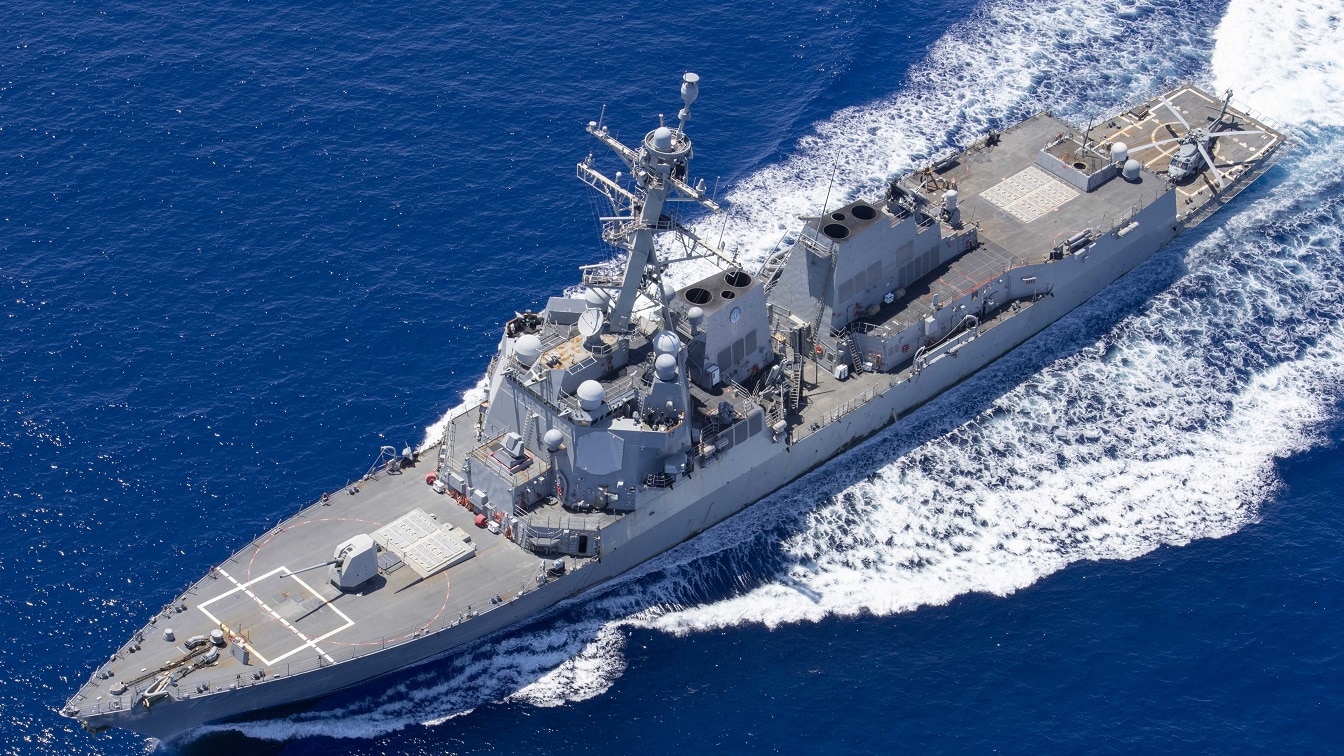Iran’s Islamic Revolutionary Guard Corp (IRGC) attempted to seize a U.S. Navy unmanned surface vessel operating in the Arabian Gulf earlier this week. A screenshot released by U.S. officials depicts Iran’s Shahid Baziar support ship unlawfully towing a Saildrone Explorer unmanned surface vessel on August 30th. This incident marks the latest in a series of escalations carried out by the regime aimed at displaying to the U.S. and the world that it can strike anywhere.
Last month, Iranian-guided proxies launched attacks targeting U.S. personnel and assets in Syria.
Tehran’s behavior indicates the regime has no intention of slowing down its malign behavior as the U.S.-Iran nuclear negotiations reach a final stage in Vienna.
Unmanned But Not Unprotected
According to the 5th Fleet, the U.S. sea drone was positioned in international waters to collect navigation and other specified data through its array of radars, sensors and, cameras. The U.S. Navy said its coastal patrol ship USS Thunderbolt was “operating nearby” the Persian Gulf “and immediately responded” to Iran’s brazen attempt to abscond with the American sea drone.
Additionally, the 5th Fleet sent a MH-60S Sea Hawk from the Helicopter Sea Combat Squadron 26 out of Bahrain to respond to the incident. The commander of U.S. 5fth Fleet and Combined Maritime Forces Vice Adm. Brad Cooper said in a release that “IRGCN’s actions were flagrant, unwarranted and inconsistent with the behavior of a professional maritime force.” The commander added, “U.S. naval forces remain vigilant and will continue to fly, sail and operate anywhere international law allows while promoting rules-based international order throughout the region.”
Saildrone uncrewed surface vehicles (USVs) are unique assets that can gather a broad range of data, including oceanic, meteorological data, and strategic intelligence. These sea drones combine wind-powered propulsion technology and solar-powered meteorological and oceanographic sensors to collect data transmissions regardless of ocean conditions. According to the Saildrone manufacturers, “The maritime security variants of the vehicles also include an advanced acoustic and camera system that, combined with our proprietary onboard machine learning algorithm, fuses sensor data to deliver significantly expanded information and decision advantage 24/7.”
Iran Misstepped in the Gulf
The IRGC’s attempted seizure of the U.S. sea drone mirrors the regime’s maritime behavior in recent years. Since 2019, Iran has really ramped up its hostile efforts targeting adversarial vessels in the Persian Gulf and Gulf of Oman. In July 2019, two tankers were targeted in suspected attacks near the Strait of Hormuz. As the strategic geographic chokepoint that sees the majority of the globe’s oil supplies pass through its waters, the Strait is vitally important to both economic and national security.
The U.S. Energy Information Administration has reported that nearly a fifth of the world’s oil consumption ventures through the Strait, emphasizing its significance. In the same year, four commercial ships owned by Saudi Arabia and the United Arab Emirates were attacked off the port of Fujairah. This trend continued into 2021, when Iran was suspected of conducting an attack targeting an Israeli-managed tanker in the Gulf of Oman that killed two crew members.
In June, tensions between Iran and the U.S. flared when three IRGC attack craft harassed two American ships off the Strait of Hormuz. A U.S. Navy warship fired a warning flare in response to the dangerous and unsafe approach of these Iranian vessels. Since this incident, the ongoing joint U.S.-Iranian nuclear negotiations has reached its final phase. Despite this context, the regime has encouraged the IRGC to carry out more provocations. The Iranian-state run Tasnim news agency reported that the IRGC conducted the attempted seizure of the U.S. sea drone because it posed a danger to international shipping without providing any evidence.
While Iran’s maritime malice is nothing new, the regime’s willingness to try to steal U.S. property in international waters marks an escalation in its strategy.
Maya Carlin is a Middle East Defense Editor with 19FortyFive. She is also an analyst with the Center for Security Policy and a former Anna Sobol Levy Fellow at IDC Herzliya in Israel. She has by-lines in many publications, including The National Interest, Jerusalem Post, and Times of Israel.

